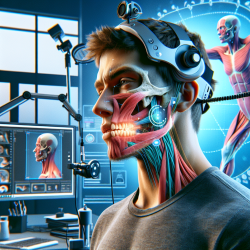Introduction
Down syndrome (DS), resulting from Trisomy 21, is the most prevalent genetic cause of cognitive impairment, affecting approximately 1 in 700 live births. The complexity of DS stems from a dosage imbalance of over 300 genes, leading to a spectrum of clinical features including speech and language impairment. Recent advancements in mouse models offer new insights into the cognitive deficits associated with DS, presenting opportunities for therapeutic interventions.
Understanding Mouse Models
Mouse models have been instrumental in replicating aspects of DS, allowing researchers to study the neurophysiological outcomes of trisomy. Models such as Ts65Dn, Ts1Cje, and Ts1Rhr have been pivotal in understanding the cognitive phenotypes associated with DS. These models help identify specific genes contributing to cognitive deficits, providing a foundation for targeted therapeutic interventions.
Behavioral Tests and Cognitive Assessment
Behavioral tests are essential for assessing cognitive functions in mouse models. Tests like the Morris Water Maze and Novel Object Recognition Task (NORT) evaluate spatial learning, memory, and recognition abilities. These assessments have highlighted deficits in hippocampal function, a key area affected in DS, and have been successfully translated into tests for individuals with DS.
Pharmacological Interventions
Mouse models have facilitated the development of pharmacological interventions targeting synaptic plasticity and neurotransmitter imbalances. Drugs such as memantine, which modulates NMDA receptors, and L-threo-dihydroxyphenylserine (L-DOPS), which addresses norepinephrine deficiencies, have shown promise in improving cognitive outcomes in DS models. These findings are paving the way for clinical trials aimed at enhancing cognitive functions in individuals with DS.
Encouraging Further Research
The use of mouse models has opened new avenues for understanding the genetic and neurophysiological underpinnings of DS. Practitioners are encouraged to stay informed about ongoing research and consider integrating emerging therapeutic strategies into their practice. By leveraging data-driven insights from these models, we can develop more effective interventions to improve the quality of life for individuals with DS.
To read the original research paper, please follow this link: The use of mouse models to understand and improve cognitive deficits in Down syndrome.










